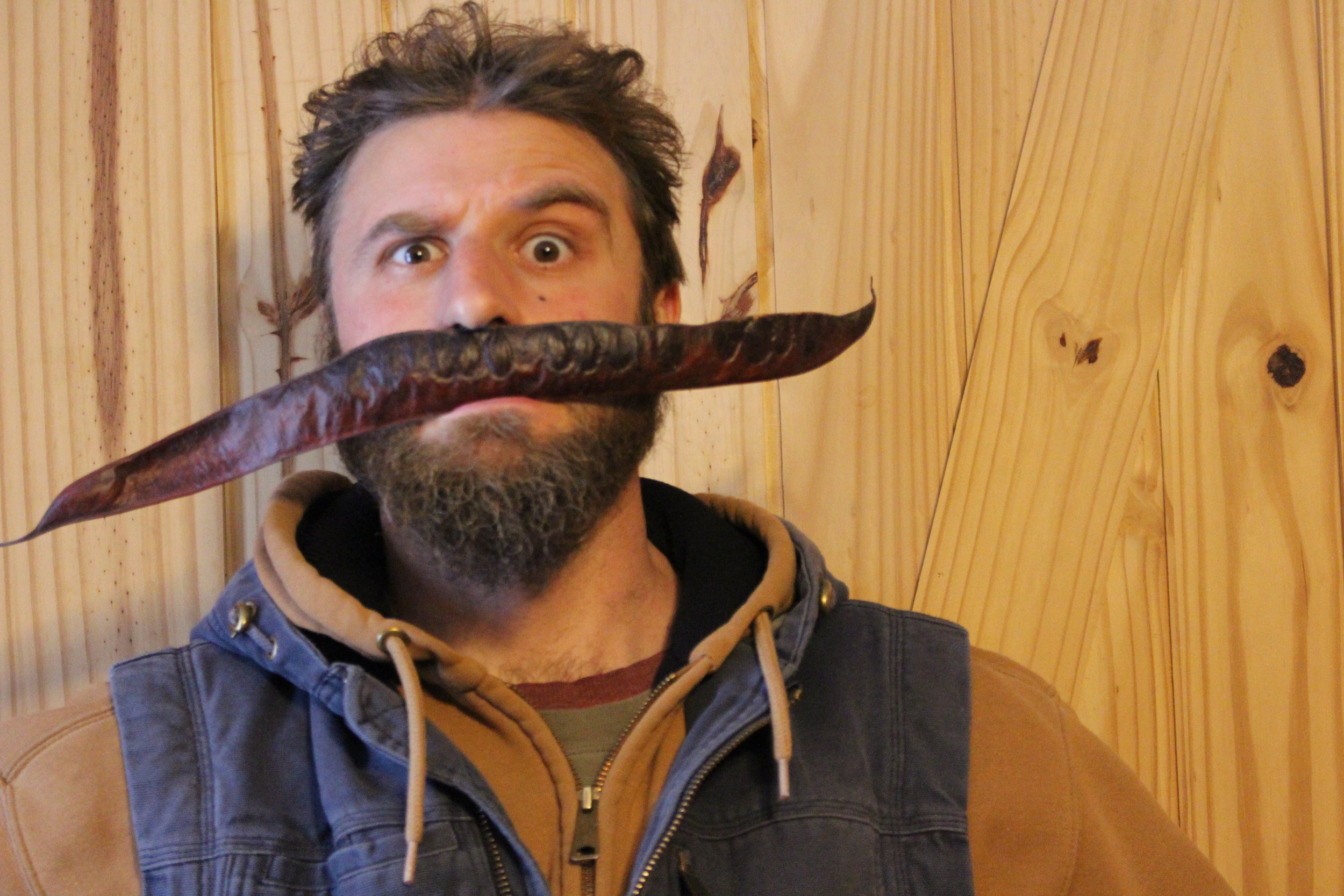 Image 1 of 2
Image 1 of 2

 Image 2 of 2
Image 2 of 2



Thornless Honey Locust seed
Imagine growing your beans or peas on a beautiful tree that can grow on the poorest of soils. The pulp around the beans tastes as if you took a chunk of mango and dipped it in honey, hence the name honey locust as well as my name for them, honeybeans!. The beans themselves taste a bit like pumpkin seeds and can be eaten green or dried. Once dried, we’ve found the best way to prepare them is to soak them for a day, then boil them until tender. The pulp can be squeezed out and eaten fresh or made into an exquisite sweetener. Historically these trees have been bred for livestock feed where it also excels.
The beans are rich in protein and minerals and the pulp provides a delicious burst of sugary energy. Being a member of the legume family means that the tree fixes it’s own nitrogen, effectively fertilizing itself and enabling it to grow in nutrient poor soils. These seedlings are grown from thornless trees, though I have heard occasionally they may revert back to their wild, thorny form if severely injured. To recap, a tree that grows protein rich beans surrounded by a tropical tasting pulp that can grow in poor soils and has beautiful flowers and fall foliage……that’s a winning combination to me! Also the pods can be MASSIVE! We’ve found some around 2 feet long!
Zones 3-9
Imagine growing your beans or peas on a beautiful tree that can grow on the poorest of soils. The pulp around the beans tastes as if you took a chunk of mango and dipped it in honey, hence the name honey locust as well as my name for them, honeybeans!. The beans themselves taste a bit like pumpkin seeds and can be eaten green or dried. Once dried, we’ve found the best way to prepare them is to soak them for a day, then boil them until tender. The pulp can be squeezed out and eaten fresh or made into an exquisite sweetener. Historically these trees have been bred for livestock feed where it also excels.
The beans are rich in protein and minerals and the pulp provides a delicious burst of sugary energy. Being a member of the legume family means that the tree fixes it’s own nitrogen, effectively fertilizing itself and enabling it to grow in nutrient poor soils. These seedlings are grown from thornless trees, though I have heard occasionally they may revert back to their wild, thorny form if severely injured. To recap, a tree that grows protein rich beans surrounded by a tropical tasting pulp that can grow in poor soils and has beautiful flowers and fall foliage……that’s a winning combination to me! Also the pods can be MASSIVE! We’ve found some around 2 feet long!
Zones 3-9
Imagine growing your beans or peas on a beautiful tree that can grow on the poorest of soils. The pulp around the beans tastes as if you took a chunk of mango and dipped it in honey, hence the name honey locust as well as my name for them, honeybeans!. The beans themselves taste a bit like pumpkin seeds and can be eaten green or dried. Once dried, we’ve found the best way to prepare them is to soak them for a day, then boil them until tender. The pulp can be squeezed out and eaten fresh or made into an exquisite sweetener. Historically these trees have been bred for livestock feed where it also excels.
The beans are rich in protein and minerals and the pulp provides a delicious burst of sugary energy. Being a member of the legume family means that the tree fixes it’s own nitrogen, effectively fertilizing itself and enabling it to grow in nutrient poor soils. These seedlings are grown from thornless trees, though I have heard occasionally they may revert back to their wild, thorny form if severely injured. To recap, a tree that grows protein rich beans surrounded by a tropical tasting pulp that can grow in poor soils and has beautiful flowers and fall foliage……that’s a winning combination to me! Also the pods can be MASSIVE! We’ve found some around 2 feet long!
Zones 3-9
